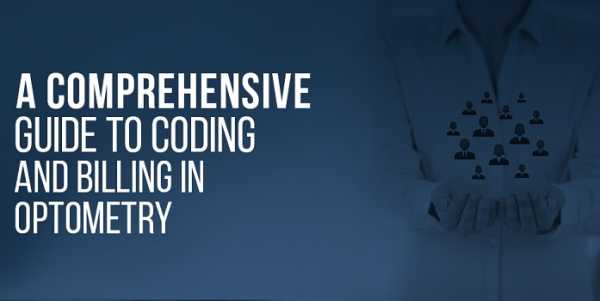
A Comprehensive Guide to Coding and Billing in Optometry
More than ever there is a greater number of Americans visiting optometrists with eye-related diseases. Doctors of Optometry (OD) are getting busier due to an increase in eye diseases and the aging American population. According to estimates, the patients' visits would increase 18% in the coming 10 years.
According to a report published by the American Optometric Association, Doctors of Optometry perform over 88 million refractive eye exams each year of the total of 104 million performed by all ophthalmologist or eye care professionals. Optometry’s market share of refractive exams is 85 percent. This includes eye examination performed by the more than 3,000 Doctors of Optometry who work in practices owned by ophthalmologists.
However, most of the staff working for optometrists is not well trained in handling billing and coding and require expert billing professionals that can provide medical billing services. To keep things aligned with the current reforms in the healthcare, optometrists are also required to properly document medical records, important findings during the initial checkup, properly archiving the history of the patients, laboratory tests, and results.
Understanding Optometry Coding and Billing
The coding and billing process of Optometry care entirely depends on the information that optometrists capture during the patient visit. This clinical information is then transcribed into medical codes to get reimbursements against payment claims. Just like any other medical specialty, optometrists also use standard medical coding to claim the bills.
The CPT codes describe the procedures performed to a patient during the clinical visit or on a follow-up visit. These procedural codes accurately describe the services provided by optometrists and it should accurately correspond with the ICD codes.
Requirements for Optometry Billing
Coding and billing for an Optometry care specialty require an advanced level of understanding and is really challenging for new billing resource to prepare perfect bills. It requires expertise and updated knowledge of the everyday changing requirements of insurance companies and state-level regulations.
To start with, a medical coding specialist should be careful of routine details of right codes and appropriate use of modifiers. Mostly the diagnoses in Optometry care includes a disease history of the patient, current symptoms, diagnostic procedures performed, laboratory tests and physician notes. This is just the start of collecting all the clinical data which has now been simplified with the use of Electronic Health Record (EHR) system or legacy EMR applications that are capable of archiving all the information at one place and make it digitally available to the medical billing experts.
Today, if an Optometry care specialty is powered with an electronic patient records management system then the job of the billing team becomes easier. They can easily fetch all the clinical information of a patient by entering the patient record number. However, this is just one part i.e. collecting all the relevant data. The accuracy of the medical bills depends on the information provided by the optometrist.
Sometimes, physicians intentionally don't enter the right codes to oblige a patient or for some other reasons and do over-coding or under-coding. This can create a difficult situation for the resources responsible for handling medical bills as there would be higher chances of receiving claim rejections.
Success in medical billing and coding for Optometry starts with accuracy in documented patient records. Insurance companies utilize services of the claim vetting experts to verify the accuracy of the information provided. At a phase, they can demand relevant patient records to verify the accuracy of the payment claim. At first they would check that of the patient is covered to receive the medical treatment, then they would confirm the medical necessity of the services provided and in the end, they validate the accuracy of the documents.
Most Common Optometric Billing and Coding Mistakes
As a provider of medical billing services provider we observe several billing and coding mistakes optometrists make but here we would just highlight a few major ones.
I. Billing office visit and foreign-body removal in the same date
II. Use codes for maximum reimbursements or over-coding
III. Coding incorrectly for extended ophthalmoscopy
IV. Use of incorrect modifiers
V. Submitting claims prior to credentialing.
How to Reduce Errors and Get Maximum Returns
There are various precautions that optometrists should take to reduce the chances of error and getting maximum payments from the insurers.
It all starts with the proper documentation of the clinical visit and the procedures performed. Secondly, optometrists should understand the individual rules of the states and credential with the most appropriate panel. There are numerous checks while coding and billing for Optometry that can reduce payment denials and implementing which optometrists can maximize their profits.
However, with an increasing number of patient visits and ever-changing requirements by insurers and government agencies, it has become very difficult for optometrists to stay informed on all the updates.
Sybrid MD is a professional provider of medical billing services to various Optometry clinics. We can help to streamline your clinical processes, credentialing, front-desk management, coding and billing, and manually checking claims before submission. Contact us for reliable and affordable Optometry billing handling.


